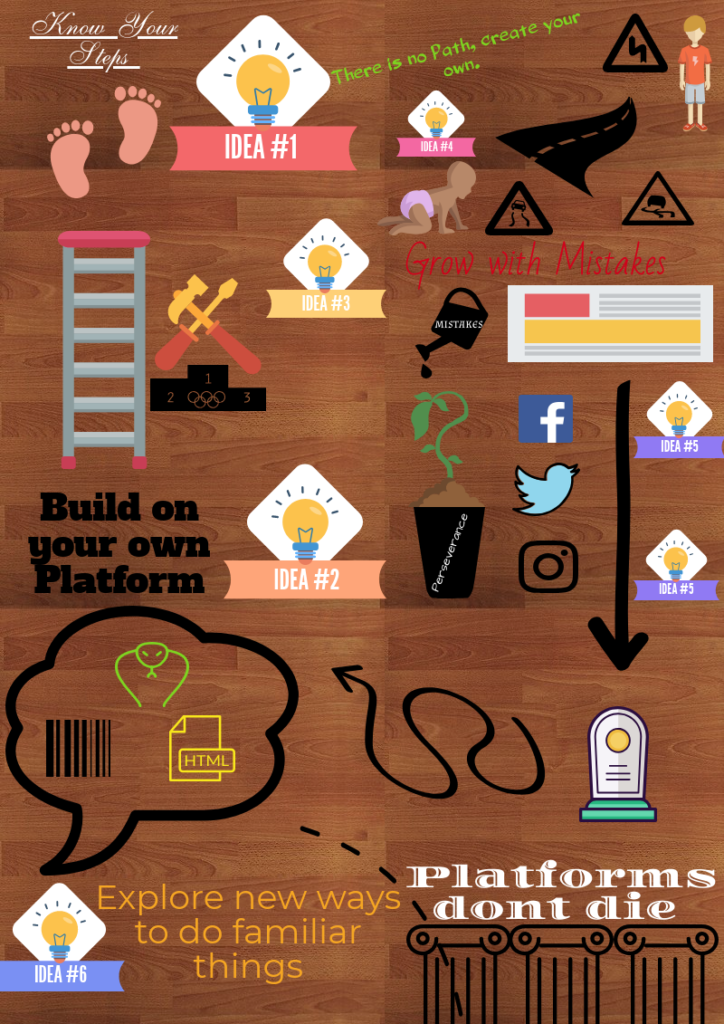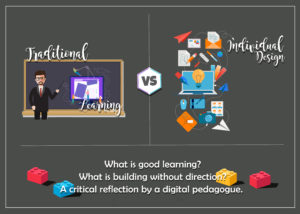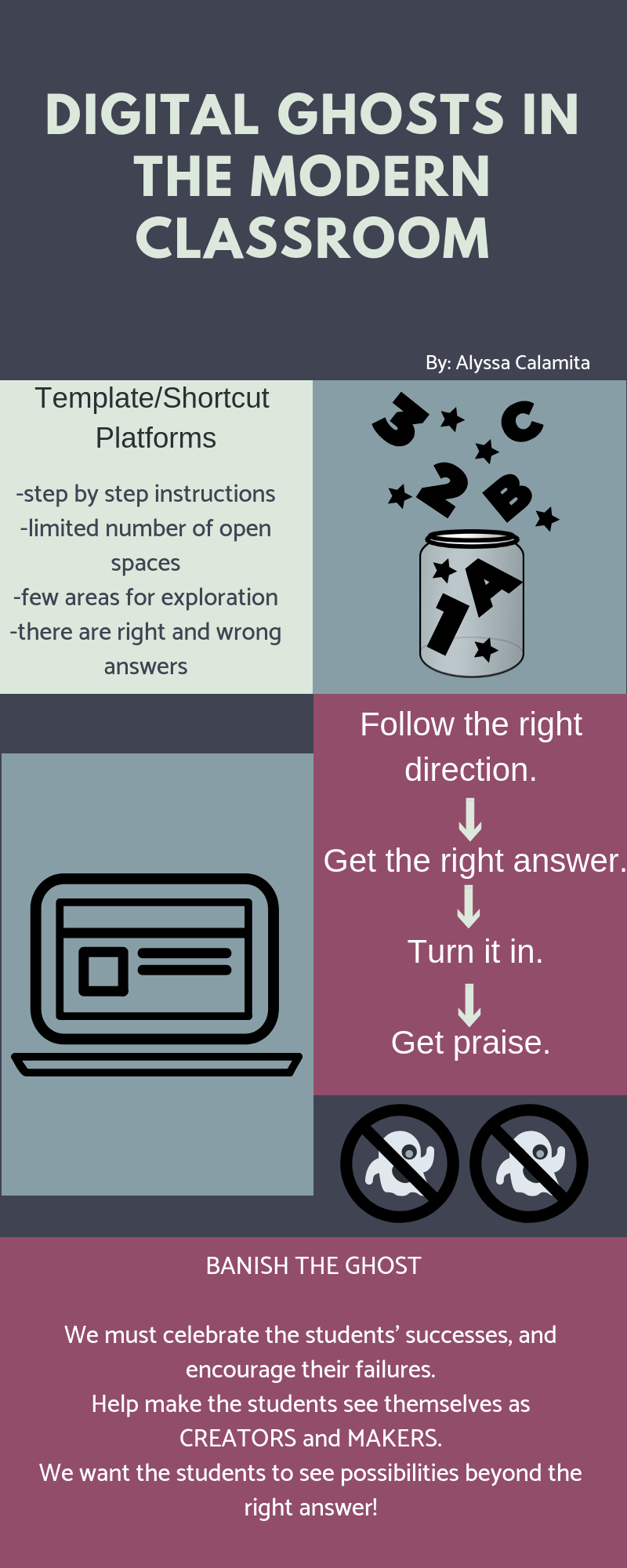Hinck’s article Digital Ghosts in the Modern Classroom discusses how most students only know how to create digital media using the template/shortcut platforms, and I am one of them. I remember taking a course during my undergrad where I had to use coding to create a basic website, and I can recall feeling frustrated and discouraged by the difficulty. I’ve always been more comfortable using applications and websites that don’t have a big learning curve so that I can get through the task, and move on to the next one. I like assignments that require me to give an answer that is either right or wrong, because it’s the way that I’ve been trained. Hinck compares template/shortcut platforms to using worksheets in the classroom, which reflect a standardized model of education. Students are using pre-set fonts, colours and layouts, while their ability to make choices is restricted in the digital media making process. As teachers, we need to show our students that they are not limited to using templates, and that there is much more available at their disposal so that they can showcase their creativity. By promoting students to become creators and makers of original and thoughtful digital media, teachers can embrace an authentic model of education. As teachers, it is our job to design tasks for our students that involve technology based on Puentedura’s SAMR model. When technology is integrated to redefine a task, it allows for more creativity.
After reading Hink’s article several times, the word that stuck out to me the most was “tinkering”. I knew the meaning of the word, but looked it up in a dictionary to see the true definition: “attempt to repair or improve something in a casual or desultory way, often to no useful effect”. I love the idea of tinkering with different things – exploring them in a casual manner and seeing what happens. Unfortunately, this opportunity has not presented itself to me in my educational experience. We should promote to students that trial and error should be encouraged rather than being perceived as failure. In the real world, trial and error is important and unavoidable in order to learn, therefore it should be valued just as much in the digital making process. Providing students with opportunities to make discoveries on their own without always having explicit instructions allows for a more rich learning experience. We can put students out of their comfort zones by not giving them linear instructions. Although there will be failures during the process, it makes celebrating successes so much more rewarding. It is a much more gratifying experience to accomplish something you didn’t know you were capable of, rather than just accomplishing a redundant task. I liked how Hinck modelled her own failures and troubleshooting to her students, because it’s important to see that they have value. We should have our students reflect on their experience with failures by discussing them in class, or by having them submit a written component about the challenges they faced and what they have learned from mistakes that were made in the process.
Let’s encourage students to take control over the programs they use and the final products they produce. Let’s take away the power from templates and platforms and develop students who are makers and creators.
I created an infographic because I do not have a lot of experience creating digital multimedia and I wanted to start the first assignment with something relatively simple, while still challenging myself. I chose a template, but I made a conscious effort to change the layout, images and colours that were preset. The template help me to start my assignment, but I still took control over the final product so that it didn’t look like anyone else’s artifact. The most challenging part for me was synthesizing my ideas, rather than developing them like in a writing assignment.





